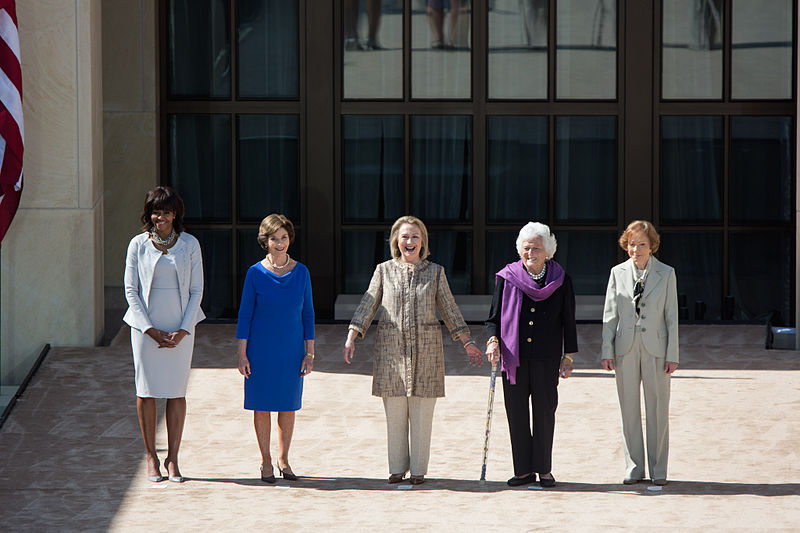The First Ladies of America, by trade, get less attention than their husbands. Not to mention the attention they do get seems to revolve around what/who they are wearing. That being said, many find other ways to express their thoughts and opinions.
Dolley Madison
Madison was known for her sophistication and hospitality, establishing herself at the center of the Washington social scene. She added a sitting room and a drawing room to The White House adding a level of sophistication, impressing visitors and the American people. She excelled as a hostess in The White House, and was famous for “drawing rooms” on Wednesday evenings. She is famous for saving George Washington’s portrait when the White House was burning during an attack by British forces in 1814. As First Lady, she helped shape the social life of the Capitol. At their First Inaugural Ball, an observer described her, “answered all my ideas of royalty.” She helped create a uniquely American interpretation of regality.
Abigail Powers Fillmore
Fillmore is the reason The White House has a library. Before then, congress had thought it would make the President too powerful. She helped select books to include during its creation. She and her husband shared a love for learning. She spent hours selecting books for a White House library and arranging them in the Oval Room upstairs.
Harriet Lane
Lane served as hostess to the only unmarried President, her uncle James Buchanan. Nicknamed the “Democratic Queen ”, Lane served The White House in 1857, navigating its social life with discretion and grace. She won national popularity. During increased sectional tension, she managed the dinner parties seating charts with special care. She acquired an art collection that she donated to the government. She was called the “first lady of the National Collection of Fine Arts”. She dedicated a generous sum to provide a home for children at the Johns Hopkins Hospital in Baltimore. It became an exceptional pediatric facility. The Harriet Lane Outpatient Clinics serve thousands of children today.
Rosalynn Carter
Carter was a champion for mental health. Throughout not only her husband’s term but both prior and later. She served as honorary chair on the President’s Commission on Mental Health when her husband created it in 1977 and testified before Congress in favor of the Mental Health System Act. Prior to the Carter Presidency, as the first lady of Georgia, she helped her husband to establish the Governor’s Commission to Improve Services to the Mentally and Emotionally Handicapped. In 1996, Carter launched the Rosalynn Carter Fellowships for Mental Health Journalism to combat stigmas through storytelling. She was also the first to officially establish the east wing office for the first lady. She lived 1927-2023.
Betty Ford
Ford had major impacts on health and addiction. She overcame her own addictions, Co-founding the Betty Ford Clinic in 1982. She was diagnosed with Breast Cancer two months after becoming the First Lady. She had such national popularity that supporters wore “Betty’s Husband for President” when they ran (unsuccessfully) in 1976. She underwent a mastectomy and was open about the illness. This affected the American people because it opened up discussion about disease that the American people had previously been reluctant to discuss. Women all around the country rushed to get breast exams, inspired by Ford. Breast cancer diagnoses increased 15% following Betty’s surgery, allowing for earlier detection—potentially saving thousands of women’s lives. She also had huge impacts on Women’s Rights, specifically supporting the Equal Rights Amendment. Ford supported the ERA by calling senators, traveled across the country to lobby for ratification, and participated in women’s conferences and meetings throughout her tenure as first lady. She even held informational sessions about the ERA in the White House family theater for the White House staff.
First Ladies create foundations, sit on boards, and become the social example of the values of that presidency. She usually ends up being the face of the Presidency, getting loads of media coverage. That being said, let’s take a look at some less famous First Ladies and their lasting impacts.



